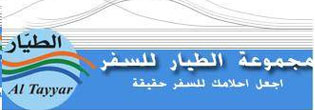Business & Finance Club - Art & Culture : If, as is often said, that a picture is worth a thousand words, then there’s a lot to be said about the quality and subjects of the photo exhibition currently on view at the Royal Embassy of Saudi Arabia in Washington, DC.
All of the works displayed are by Saudi photographers. Women Saudi photographers. The result is a peek into a world unknown by most Westerns. Some are alluring, others provoking. A simple picture of a dress that covers a woman’s feet to the ankles and her hand reaching down to pick up her purse near her high heels exudes the sensualism associated with A Thousand and One Nights.
The photos certainly succeed in breaking the stereotypes of women in the Kingdom.
Behind the exhibition is a book called “Photography Through The Eyes of Saudi Arabian Women,” and behind the book is a powerhouse of a young Saudi woman pushing to bring women the recognition they deserve for their talent.
“Female artists and photographers were always there (in Saudi Arabia), they just didn’t get much exposure,” said Rania Abdelrazek.
She should know. Rania established the Kingdom’s first diploma in photography. At Dar Al-Hekma College, she has worked to encourage a generation of young Saudi women artists and photographers whose images of the Kingdom provide unique insight into Saudi society.
“Education has had a lot to do with it. Before it was not offered in college.” After Rania completed a B.A. in English literature from the University of Evansville in Indiana, and received an M.A. in Film and Video Production from the American University in Washington, DC, she returned to Jeddah to work.
This resulted in photography and graphic design being offered as classes. “More and more people are getting involved in it. I call it a ‘baby boom’ in photography,” says Rania.
She says she wanted to paint but discovered early on she didn’t have any talent in the field. Rania then found her medium in photography.
“I wish I could paint, I love to paint, but I can’t. Photography allows me to paint through the lens of a camera.
“From a young age, I pestered my family because I always wanted to take photos of them, and my friends. And, of course, I was always asking my father for new cameras.”
Currently using a Nikon D80, Rania’s photos have helped her become a well-known artist in her own right, while helping other women photographers too.
Rania’s idea for a book began as a simple personal journal about three years ago. “Then I thought to include other Saudi women, too. I wanted to give more exposure to Saudi women in the photography field.”
More than a dozen Saudi women photographers have turned their lenses on Saudi society and culture in the book, “Photography Through The Eyes of Saudi Arabian Women,” conceived and edited by Rania.
Photos from the book are currently on display at the Royal Embassy of Saudi Arabia in Washington throughout August.
Rania hopes the exhibition will help break some of the stereotypes American people have of Saudis, especially women.
“Saudi women have an enormous amount of talent in the field of arts which people here don’t hear about. These are wonderful photos. These really give a feel for the country,” said Nail Al-Jubeir, the head of the Saudi Information Office who introduced Rania at the embassy event.
Rania will admit it wasn’t easy to become a photographer. “I would worry that the police or other civilians might take my camera away or at least object when shooting images.”
Times have changed, she says gratefully. “Now, they sometimes smile and let me take a photo of them!”
As a result of the success of the Dar Al-Hekma club, many more photography clubs and organizations have formed in various Saudi cities. “Government authorization letters are even now being granted to allow us to photograph certain sites,” adds Rania.
She says launching the book garnered a lot of interest. “In Saudi Arabia we were exposing our work to the Saudi people, but here we want Westerners to see it as a way to learn about Saudi Arabia. It was targeted for Western consumption, which is why it’s written in English.”
The exhibition was in Jeddah before moving to Washington, DC. From here it will travel to Dubai in February. She also hopes to take the exhibition to London afterward.
The impact of women Saudi photographers has not gone unobserved back home.
“Men throughout the Kingdom have taken notice,” said Rania.
“Saudi men, for now, feel like we’ve taken the spotlight, and want to participate with us. The photography club is at Dar Al-Hekma, and when a group of women would go out shooting, men kept asking if they could join and take photographs, too.”
Rania said they are now discussing the possibility that, after the exhibition, to “do something with men and women together in the realm of photography.”
The women’s photography has also caught the attention of professional corporations.
After Dar Al-Hekma opened their graphic design classes, Rania said advertising companies started hiring women photographers to work for them “because they believe that they have more of a feel of what women want in advertising.”
“Saudi men are hiring more women because they want the woman’s mind represented in the advertising field,” she adds.
As for her book, Rania said it’s been listed on Amazon since May. She is pleased that people in the US are enjoying her book, she hopes the images will compete against negative perceptions of Saudis in the West.
“To better represent ourselves, it’s good to show our work and share our knowledge, to better show ourselves to the world.”











